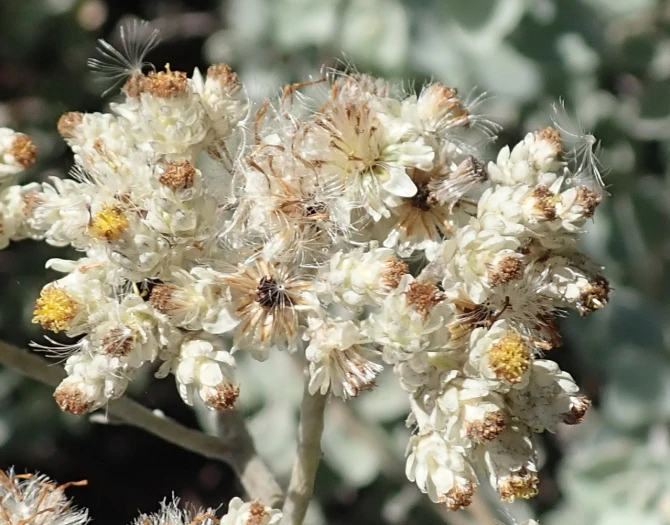Licorice-Plant
(Helichrysum petiolare)
Licorice-Plant (Helichrysum petiolare)
/
/

Nicola van Berkel
CC BY-SA 4.0
Image By:
Nicola van Berkel
Recorded By:
Copyright:
CC BY-SA 4.0
Copyright Notice:
Photo by: Nicola van Berkel | License Type: CC BY-SA 4.0 | License URL: http://creativecommons.org/licenses/by-sa/4.0/ | Rights Holder: Nicola van Berkel | Publisher: iNaturalist | Date Created: 2020-01-25T14:46:33-08:00 |



















































Estimated Native Range
Climate Requirements for Binghamton, New York
| This Plant | Your Site | Plant Suitability for Your Location | ||
|---|---|---|---|---|
| • Precipitation | 11" - 89" | 39" | Aquatic | Aquatic |
| • High Temp. | 64°F - 94°F | 83°F | Your summer temperatures are normal for this plant. | Excellent |
| • Low Temp. | 17°F - 65°F | 15°F | Your winter temperatures may be too cold for this plant | Too cold |
This plant may not grow well at your location - your precipitation is too high.
Summary
Helichrysum petiolare, commonly known as Licorice-Plant, is an evergreen perennial shrub or vine native to open grasslands and the edges of forests in Southern Africa. It typically grows to about 45 cm (18 in) high and can spread up to 150 cm (59 in) wide. The plant features soft, furry grey-green leaves that emit a faint licorice aroma when brushed or crushed, and it bears small, inconspicuous white flowers. The foliage is the main ornamental feature, making it a popular choice for adding texture to garden compositions.
Licorice-Plant is valued for its attractive foliage and is often used as ground cover or in hanging baskets due to its trailing habit. It is also suitable for coastal gardens, as it can tolerate salt spray. In cultivation, it thrives in full sun to partial shade and requires well-drained soil to prevent root rot. It is hardy to USDA zones 9-11, where it can withstand mild winters without freezing. Regular pruning can help maintain its shape and promote denser growth. Gardeners should be cautious, as Helichrysum petiolare can become invasive outside its native range, particularly in regions like California, where it can outcompete native species.CC BY-SA 4.0
Licorice-Plant is valued for its attractive foliage and is often used as ground cover or in hanging baskets due to its trailing habit. It is also suitable for coastal gardens, as it can tolerate salt spray. In cultivation, it thrives in full sun to partial shade and requires well-drained soil to prevent root rot. It is hardy to USDA zones 9-11, where it can withstand mild winters without freezing. Regular pruning can help maintain its shape and promote denser growth. Gardeners should be cautious, as Helichrysum petiolare can become invasive outside its native range, particularly in regions like California, where it can outcompete native species.CC BY-SA 4.0
Plant Description
- Plant Type: Shrub
- Height: 0.5-0.8 feet
- Width: 0.5-3 feet
- Growth Rate: Moderate
- Flower Color: Cream, White, White
- Flowering Season: Summer
- Leaf Retention: Evergreen
Growth Requirements
- Sun: Full Sun, Part Shade
- Water: Low, Medium
- Drainage: Fast
Common Uses
Bee Garden, Border Plant, Butterfly Garden, Deer Resistant, Drought Tolerant, Erosion Control, Fire Resistant, Fragrant, Groundcover, Low Maintenance, Potted Plant, Rabbit Resistant, Salt Tolerant, Street Planting
Natural Habitat
Native to open grasslands and the edges of forests in Southern Africa
Other Names
Common Names: Trailing Dusty Miller, Liquorice Plant, Trailing Dusty-Miller, Silver-Bush Everlasting-Flower, Lakritz-Strohblume, Rabatteternell, Licorice Plant
Scientific Names: Helichrysum petiolare, Helichrysum petiolatum, Gnaphalium petiolatum
GBIF Accepted Name: Helichrysum petiolare Hilliard & B.L.Burtt